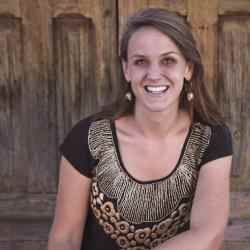Introduction
Beginning with highway rescue, Dr. Subroto Das is creating for the first time in the history of South Asia, emergency medical systems that integrate the work of hospitals, ambulances, police, citizens, and the state.
The New Idea
Among India’s labyrinthine network of highways and expressways, Dr. Subroto Das is building a comprehensive system of emergency medical care. Research has shown that 80 percent of highway fatalities can be avoided if medical help reaches the victim within the Golden Hour—the first hour after an accident. He uses existing medical facilities and state infrastructure and works with a wide range of groups from doctors to government authorities, from police personnel to petrol pump attendants, from the corporate sector to communities along the highways, to tackle any obstacle that stands in the way of rapid response to post-accident trauma.
Subroto has improved or invented roles for important stakeholders in nascent highway emergency systems. He organizes training for doctors in the emergency-room procedures and medical aspects of trauma. He has worked with police, firefighters, ambulance owners, and their drivers to ensure that they can save lives without losing money or falling into jurisdictional disputes. He trains schoolchildren in the villages along highways in primary first aid and transportation, making methods of saving lives an integral part of their education. He has mapped the highways in detail, set up a 24-hour telephone helpline, erected hundreds of road signs, and taken inventory of the personnel, facilities, and policies of every hospital, clinic, and blood bank near the highways.
The Highway Rescue Project, under the banner of the Lifeline Foundation, has saved as many as 1,258 accident victims with life threatening injuries and 1,070 with minor or moderate injuries within 39 months of the project’s launch in 2002. Subroto has successfully implemented his programs along a 1325 kilometer stretch of national highways in Gujarat and 123 kilometers in the newly started Maharashtra. Efforts are under way to spread to the more than 14,800 kilometer of highways linking the four major metropolitan cities of India. Ultimately, he plans for his systems of emergency care to reach the length and breadth of the country.
The Problem
The World Health Organization reports that 1.5 million persons are injured and at least one hundred thousand killed in road accidents annually in India, but highway rescue and paramedical services largely remain an alien concept. The government prioritizes the building of roads, but makes no provision for facilities or services to make those roads safe and secure. Emergency medical services (EMS) barely exist in large parts of the country, and where they do function, the red tape of bureaucracy makes them nearly useless. Poor road conditions and the blend of fast and slow moving traffic on the same routes add to the rising rates of accidents.
The country lacks a standardized emergency medical response system and a central call line such as 911 in the United States. Worse, there are no clear rules about who is responsible for evacuation of accident victims—the state government, highway authorities or the police. Absence of standardized EMS laws across states or uniform trauma protocol in medical centers, as well as the lack of public-private partnerships compound the problem. While some institutions may exist, they lack the resources and knowledge to be truly effective. Accident victims have to rely on untrained passersby and villagers for care, but even these caring people are often loath to involve themselves too deeply for fear of legal and other complications.
Entrenched bureaucratic policies stand in the way of effective systems of emergency care. Hospitals usually demand payment before serving the injured. Hospital authorities, especially in private hospitals, often deny help unless an information report has been filed with the police even though India’s Supreme Court has ruled this step unnecessary. When callers manage to reach a police station, they are often refused service unless they can precisely identify the police station under whose jurisdiction the accident has happened. As callers work their way through such complications, precious time is lost for victims of highway accidents.
Even when victims make it into an ambulance, their treatment is far from secure. Although highways are made to connect states, the mobility of ambulances is restricted between states unless the vehicle has a largely redundant set of permits. Because of jurisdiction law, an ambulance may take a critically injured accident victim to a hospital 2 hours away in its home state rather than traveling 15 minutes to a hospital in a neighboring state. Even worse, rural ambulances are multi-use vehicles, ferrying supplies, vegetables, and the families of hospital superiors as well as patients. They are often ill equipped, without trained personnel or the minimum equipment or hygienic preparation.
The Strategy
The compelling force of Subroto’s work lies in his ability to recognize the strengths of an apparently dysfunctional system and leverage what resources it has to create a new package of life-saving services. Rather than duplicating infrastructure and reinventing processes, he renews existing programs and brings them into harmonious collaboration.
His work falls into four main categories: networking existing programs to create a pool of resources; introducing professional standards of trauma protocol and revitalizing medical facilities; reaching out to the end-user via a 24-hour helpline; and connecting with influential stakeholders to keep the endeavor sustainable.
In the early stages of his project Subroto gathered a formidable group of allies. Knowing that highway construction was a high priority for the prime minister, he approached the prime minister’s Office directly for assistance. Rather than asking for money, he requested permission to put up helpline numbers, and begged their help in navigating the political and legal wrangles that cripple so many efforts in India. With no downside, and with only political gain to win from their association with his project, they quickly lent their support. In much the same manner, Subroto gained the help of major corporations. Preaching the benefits of corporate responsibility, he partnered with Hutch, a leading cellular phone company, to provide toll-free helpline numbers and networking facilities. He approached India’s leading steel company, TATA Steel, for signboards and a well-known paint company to help create signs for his 24-hour helpline.
Armed with permission from the National Highways Authority of India, Subroto set about mapping and networking existing facilities on the stretch of highways targeted for his pilot project. He mapped each milestone, recorded every landmark, and collated data on the nearest hospitals, ambulance services, villages, and police posts. To facilitate police handling, Subroto had to map the highway to exacting standards so that police jurisdiction was clear.
Subroto ensures that his network of services for highway rescue comes at no cost to the accident victim. He maintains a conglomerate of 20 major corporations, all stakeholders in some aspect of traffic safety, to fund the initiative. IOC, Birla Tyres, TATA Motors, Hutch, and State Bank of Saurashtra are key companies partnering the initiative in Gujarat. UTI Bank is picking up costs for victim evacuation in Maharashtra, while the Bengal National Chamber of Commerce in West Bengal and Ashok Leyland in Tamil Nadu are working on logistics to partner with Lifeline in their respective states. The sponsorship of roadside evacuations is crucial in that it guarantees payment to ambulance owners who were previously reluctant to release their fleets to unreliable emergency situations.
The helpline is well advertised on the highways at 5 kilometer intervals and offers a safe and anonymous forum for reporting accidents. A 24-hour control room responds to distress calls, directing 149 ambulances located at different points along the highway and coordinating the 68 hospitals on alert for the system. Subroto’s team developed a software program by which the control room can pinpoint the location of an accident site on a digital map down to the nearest 200 meters without using GPS. Thus, when a call comes through, hospitals, ambulance services, cranes and metal cutters, and the police are informed simultaneously.
To support the helpline Subroto has developed a network of disparate groups. Among the first he approached were ambulance drivers. Overworked and underpaid, ambulance drivers in India are provided with few safeguards, modest equipment and little to no paramedical training. Subroto brought the drivers into his network, building their self-esteem by drawing attention to the vital role they play in the life-saving operations of emergency rescue. He helps them gain the legal and medical knowledge they need to respond quickly to highway crises. He launched the Ambulance Association of India to improve and standardize ambulance services throughout the country.
His next step was to sensitize the police to their role in the burgeoning highway rescue system. He initiated training programs on the handling of trauma victims and disseminated information on state laws and jurisdictions. Subroto also works to raise awareness levels among the medical community and in hospitals on laws and techniques relating to emergency care. He is working to standardize trauma protocol in hospitals all over the country.
The general public plays a vital role in his network as well. His programs already train doctors and paramedics of rural health centers in first aid and emergency response in more than 25 districts of the state of Gujarat through the support of United Nations Development Programme (UNDP). Other programs target residents of villages along the highways, providing training in rescue and first aid and helping residents form village task forces to coordinate emergency care and support the District Development Officers of each district. Subroto is currently working with five thousand schoolchildren along the highways covered by his pilot project. His eventual aim is to make sure that even a fourth grade student will be able to provide the minimum first aid required to save a life.
Subroto’s model will soon expand to cover the nearly 15,000 kilometers of highway connecting the four major cities of India. He has recruited partnering organizations to help manage the funding and execution in their home districts while Lifeline provides the technical know-how, the necessary permissions, training of trainers, and other resources. To ensure quality control, partners have to be associates of Friends of Highways, a national-level body Subroto envisages, with uniform guidelines and standards for emergency medical services. Through this association Subroto hopes to establish a single nationwide helpline number covering all types of emergencies.
The Person
The second ever medical graduate trained in hospital administration in the state of Gujarat, Dr. Subroto Das drew life’s first lessons from the game of cricket. He learned as school cricket captain that all lasting success depends on teamwork and developed strategies to bring his team powerfully together. A skilled tennis and basketball player, he draws the strategies used in sports to analyze his failures and to regroup for new victories.
An only child, Subroto took up medical studies at his parents’ insistence, but he soon became fascinated with hospital administration and marketing, a discipline that gave him insights into how better health care systems could be put into place. This cemented in his mind the importance of networking. On a cricketing visit to Lord’s in London in 1987, he took time off to study British health care delivery systems. A chance visit to rural India soon after opened his eyes to the huge gap in his country’s health care system and in particular, to the abysmal lack of trauma care. His passion to change the system had its genesis during this visit.
Two personal experiences brought this passion to bear on emergency care and resulted in the birth of the Highway Rescue Project. First, he lost a friend in a road accident because help did not arrive in time. Then he, his wife, and a friend were involved in a nearly fatal accident, stranded with their injuries for nearly five hours before a kind milkman stopped to help. Even after the milkman arrived, it took hours for them to reach the nearest hospital. Subroto decided then that he could not let such misfortune continue to fall on others.




